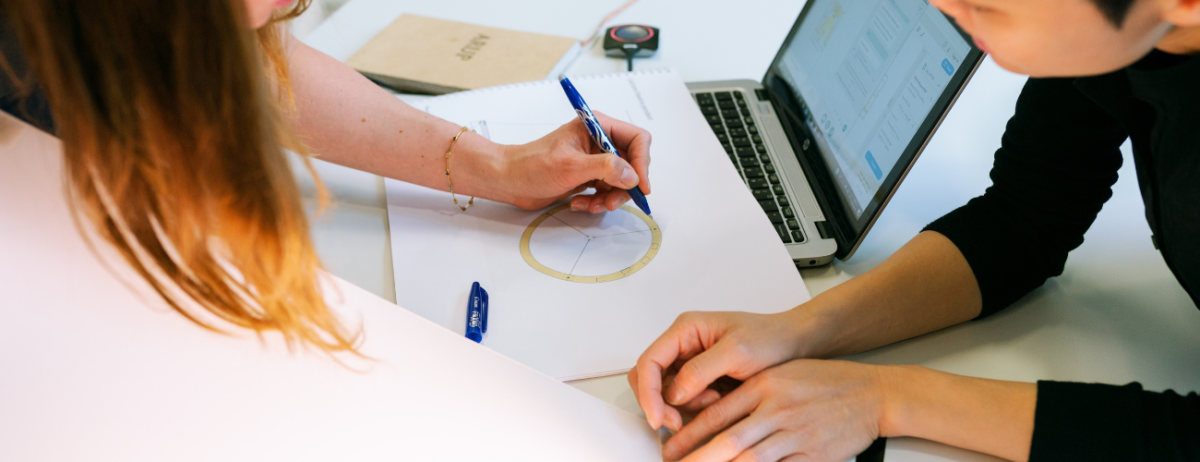People from all walks of life dream of pursuing entrepreneurship. It grants us the opportunity to become our own bosses. And who wouldn’t like to take charge of their careers in such a way? But did you know that choosing the best logo template for you plays a crucial role in a business’s success?
Branding is a crucial component of any business. Without a memorable brand, no company can survive such a competitive landscape. This is why, as early as planning to open a business, we need to think about how we want the public to perceive us. In doing so, we’ll come across logo designs.
Intro to Logo Design Templates
A pivotal step to establishing one’s brand is choosing a logo design. It doesn’t matter what field we decide to go in, what services we plan to offer, or if we’re working freelance — no business can exist without a proper logo.
How can they, when logos are the face of one’s business? It is one of the bases people go off on to differentiate one entity from its competition, so we need to make sure that our logo stands out and represents our brand well.
A professional designer can help create such a logo design. It should be noted, though, that this isn’t always the best path to take. Some people have unpleasant experiences working with artists or just don’t have the financial capacity to do so. Fortunately, we can turn to templates, which are abundant online.
Now, the process of choosing the best logo template can be lengthy, but it doesn’t have to be overcomplicated. The first and perhaps most important thing we need to do is gather answers that can lead us to the logo that will boost our business’ visibility.
So, without further ado, here are the top four (4) questions that need answering if we want to learn how to choose a logo correctly.
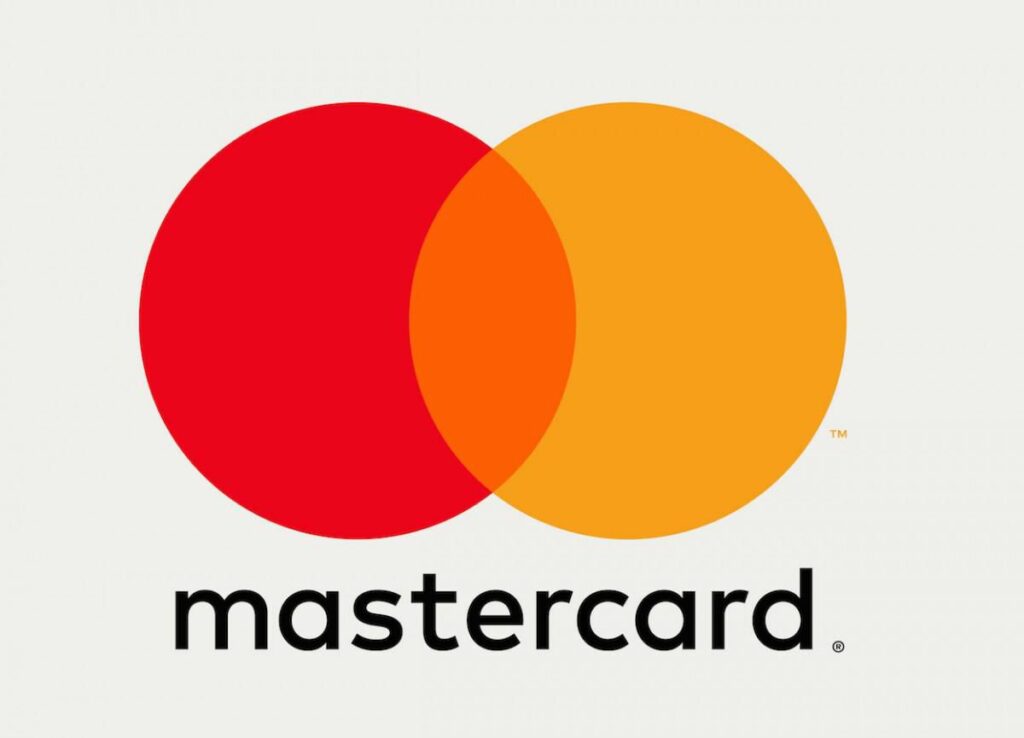
Why Do You Need A Logo?
Before anything else, we must first understand the role the logo plays in the business world, which mainly has to do with identity.
See, the public, which includes both fellow business people and the average day-to-day person, expect companies to have logos. Consider it our faces, and no one can exist without a face.
As previously mentioned, this face helps potential clients, customers, and partners differentiate our firms from other firms. But how exactly does the logo get us to such a point?
It depends on the kind of business we wish to run. For example, product-based companies operate differently from those that offer services. For one, clothing and technology brands have to stamp their logos (or variations of said logos) on every piece of merchandise they put out, not just on their marketing materials.
Upon noticing, purchasing, and using these merchandise, consumers will then associate the products they bought with the parent company regardless of if the quality fits their standards or not.
In this case, the logo is the primary marker consumers use with the association. Logos stamped on high-quality products eventually result in brand loyalty. Companies big and small can only gain from boosted brand loyalty among the average consumer since it helps guarantee a steady income.
Look at global brands like Louis Vuitton with the signature LV, Apple with the half bitten Apple, and Rolex using its name as a classic font logo. We all know these iconic brands and their corresponding “faces.” While some are merely interested in what these brands put out, others fawn to the point that they collect pieces from these brands. Such behavior is an excellent example of brand loyalty. How close can you get to this kind of brand? Choosing the best logo template for you can mean you’re one step closer.
What Is Your Brand Identity?
The second order of business is crafting the face we wish to show the world, which we can’t accomplish without identifying our brands’ core personality — what makes it unique.
In doing so, we make it easy for ourselves to choose the best logo templates. Moving forward, design choices regarding other marketing tools will be hassle-free, too.
The following factors are some we need to consider in the process of figuring out our brand identities:
- The reason behind opening a business
- The core values and traditions we wish to implement in our businesses
- The inherent uniqueness our companies have to offer
- The three words we want to describe our brands with; and
- The three words we want the public to use in describing our brands
Answering these questions will help us arrive at beautifully unique brand personalities. Once we have an inkling of these personalities, we can better hone them by making sure that they possess the following qualities:
– Noteworthy – our brand identities should make it easy for the public to recognize and remember our companies, even without mentioning the company name.
– Flexible – our brand identities should be capable of scaling up with our businesses.
– Accessible – our brand identities should be easy to apply to marketing materials even without professional designers’ help.
So, then we have to ask:
What Is The Design Style For You?
Opting to use logo templates doesn’t mean that we’re free from having to make design choices. With that being said, we simply can’t dive into graphics, typography, or even colors without deciding upon the overlying design style for our brands and corresponding logos.
Throughout design history, numerous styles have been invented, but very few remain in principal design styles.
Modern Minimalist

The first of which is Modern Minimalist. The clean design style is about cutting all the “extra pieces” as much as possible, leaving tones of white spaces and sleek, simple lines. Combined, these elements create a geometric look.
The Modern Minimalist style is often associated with freshness, a perfect fit for brands that wish to convey they can keep up with the ever-changing world. If Modern Minimalism doesn’t work for our brands, perhaps we can consider the Handmade and Crafted look.
Handmade and Crafted
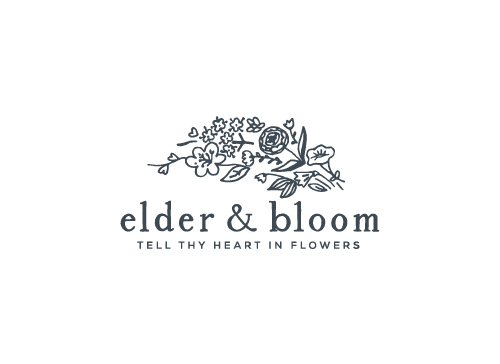
The Handmade and Crafted design often features elements that have a pleasant roughness to them, almost as if they were done by hand, as the name implies. Aside from roughness, Handmade and Crafted designs can also feature vintage elements, perhaps in the form of patterns, fonts, or color choices.
This approach works best for businesses that wish to convey individuality and intimacy. For example, small companies planning to release products that can’t be mass-produced can easily represent their brand with such a design style. Reflecting your ethos with the best logo template you can find will help you create a brand.
Quirky
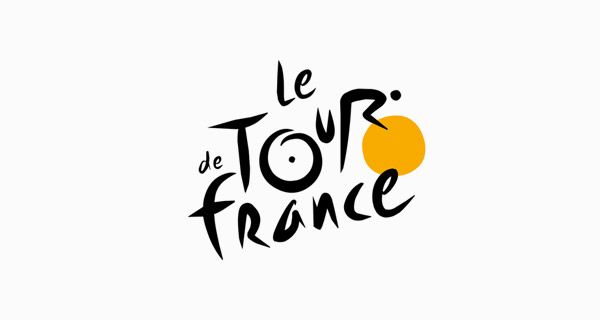
The next design style is perhaps one of the most flexible choices currently. Referred to as the Quirky design, this style allows for maximum personalization for font, color, and graphic options. If done correctly, the Quirky design can help our companies come across as warm and inviting. A young target demographic is most likely to receive this design style positively.
These design styles branch off into other varieties. Considering this, it’s good to keep in mind that there is no rule about abiding by just one design style. We can mix and match any of the styles with a different style, coming up with one that exudes our brand’s personality the most.
What Is The Right Logo Design For Your Brand?
After selecting the overall design style, we then move on to the most critical part of knowing how to choose the best logo template design: learning about the different types of logos.
Here are the six main types we should know about before perusing through the best logo templates that Template Monkey has to offer:
Logotypes
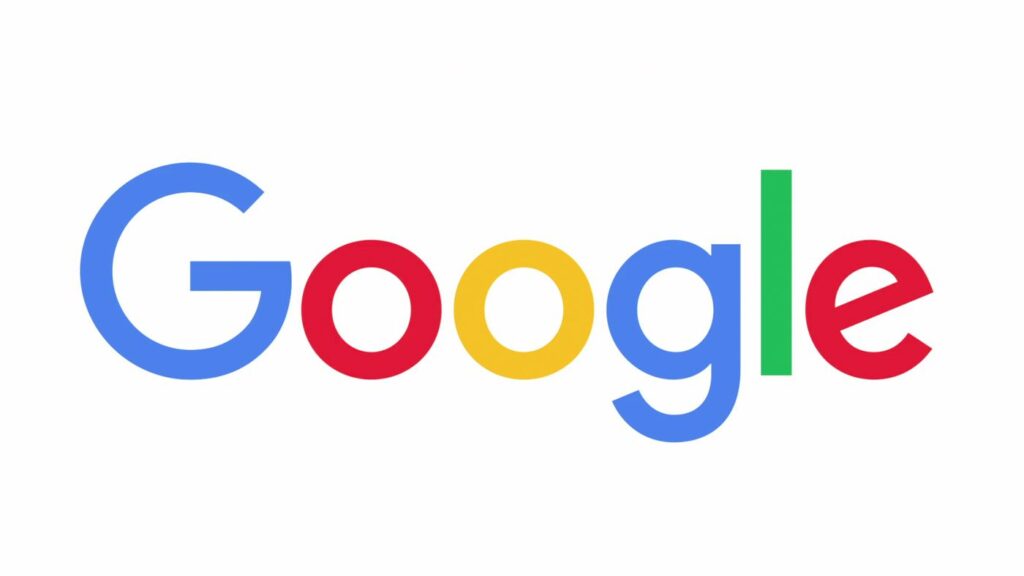
Otherwise referred to as “wordmarks,” logotypes are logos consisting of pure words depicting the company name. This type of logo places great importance on typography, so our font style and color choices need to be meaningful.
Some brands with logotypes are Google and Samsung. Two vastly different logos with similarly remarkable designs.
The logotype is perfect for getting the names of our companies out there. It also works best for freelancers whose actual names are part of their brand.
A quick note about logotypes: their simplicity means logos need constant updating to refresh the brand look. It’s also best to avoid this type of logo if our company name is too long (i.e., more than two words).
Brand Marks
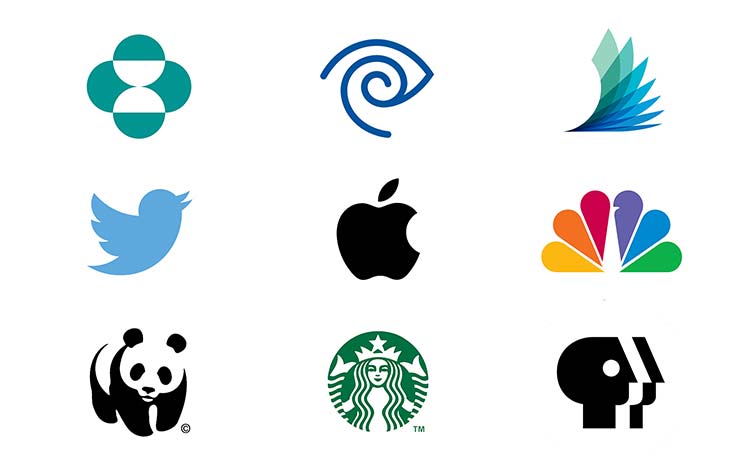
On the other end of the spectrum are Brand Marks (Pictorial Marks). While we may combine this logo with words, it typically features none and expects the chosen graphic (that of a real-world object) to speak for itself. The selected object sometimes represents what the company has to offer. Take a look at YouTube’s Play Button logo, which encompasses the video streaming site’s service.
It doesn’t always have to be this way, though. Apple’s bitten apple logo, for example, represents its name rather than its services.
A quick note about brand marks: As striking as Brand Marks may be, they don’t work well with brands looking to establish a very formal and traditional image. The same goes for companies that aren’t sure of what services or products they would like to offer.
Monogram
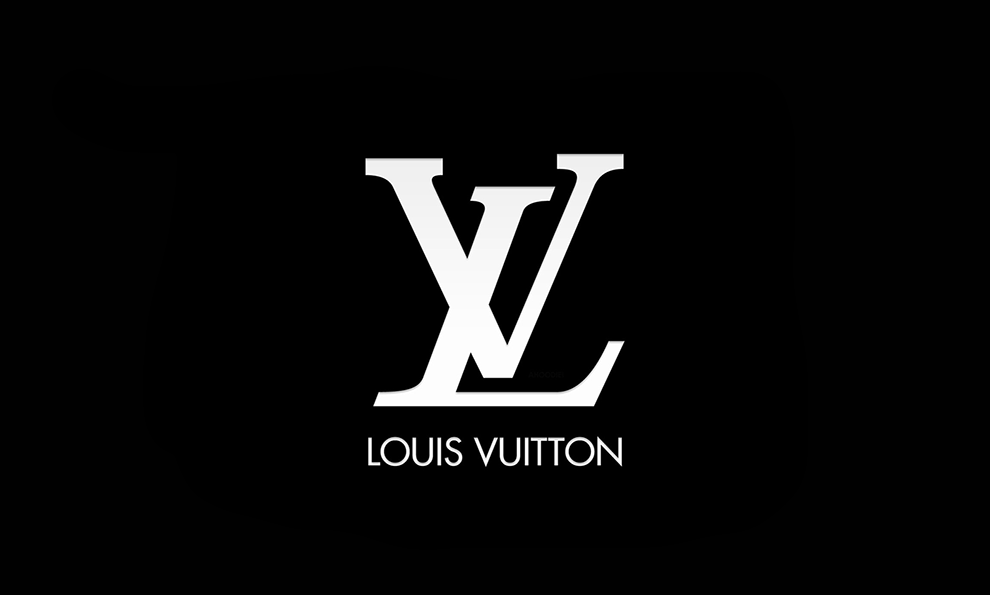
Third on the list are Monogram logos or Lettermarks. Similar to logotypes, Monogram logos only features fonts and colors to create the final design. This type of logo is perfect for brands with long names, like Cable News Network (CNN) and Yves Saint Laurent (YSL).
The company name doesn’t have to be overly long, though, for one to use Monograms. Chanel, for example, is more known for its Double-C logo. The same goes for Louis Vuitton and the iconic LV.
A quick note about monograms: Startups should consider including a letterform if they move forward with a Monogram logo. This way, the public can slowly associate the company name with the letter combination provided in the design.
Emblems
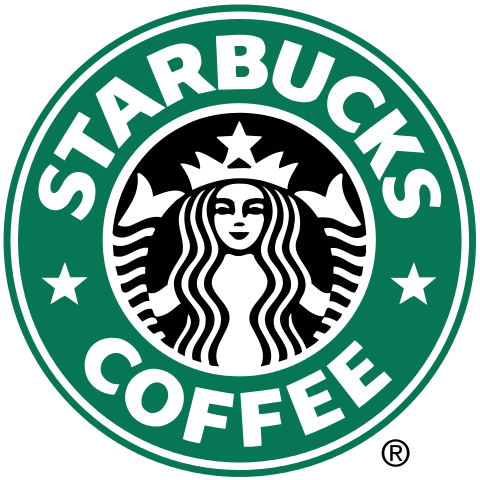
You might associate emblems with universities, for a good reason. University seals commonly feature writing within a detailed symbol or icon, which is the simplest way to explain Emblems. Another fact: Emblems are the oldest logo type, dating back to the middle ages.
Now, aside from university seals, some famous Emblems come in the form of the Starbucks and Harley Davidson logos.
The details that go into Emblem logos lend towards creating an air of professionalism and traditionality to one’s brand. Not only that, but Emblems also make it seem as if a brand has been around for ages.
A quick note about emblems: Emblems aren’t as flexible as other logo types, so those who have plans to update their logo continually or aren’t sure about a final design should keep away from this type of logo. Moreover, without proper care going into the craftsmanship, Emblems may not scale up in size well.
Abstract Marks
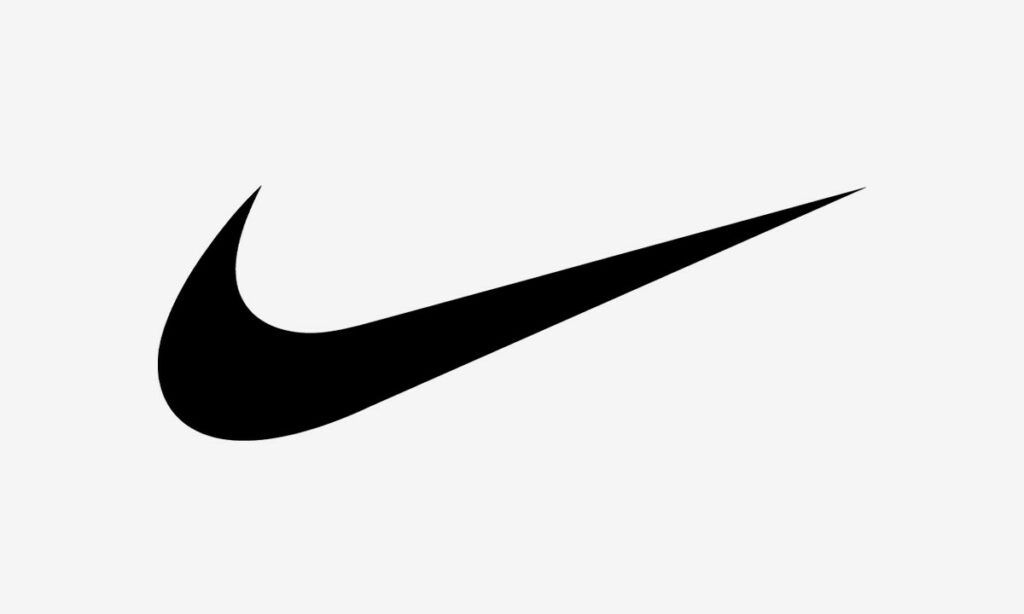
The aforementioned Brand Marks directly represent either the services or the name of the company. Abstract Marks are graphic designs that move away from literal representations.
On the risk of sounding pretentious, Abstract Marks evoke a specific feeling rather than a thought — something that can go south considering not every person will have the same interpretation as the company.
Despite this risk, Abstract Marks are excellent for individuality and uniqueness. Take, for example, Nike’s checkmark logo, which represents “a swoosh” sound born from speed, power, and motivation. Without proper research, consumers may think differently. But the benefit to the design is that no one else can make use of the checkmark because it’s deeply ingrained in Nike’s history.
A quick note about abstract marks: Once again, without word accompaniment, this logotype won’t function well for smaller brands. Those who push forward with Abstract Marks need to be careful and precise in designing the said logo to portray the message they want the public to remember adequately.
Mascots
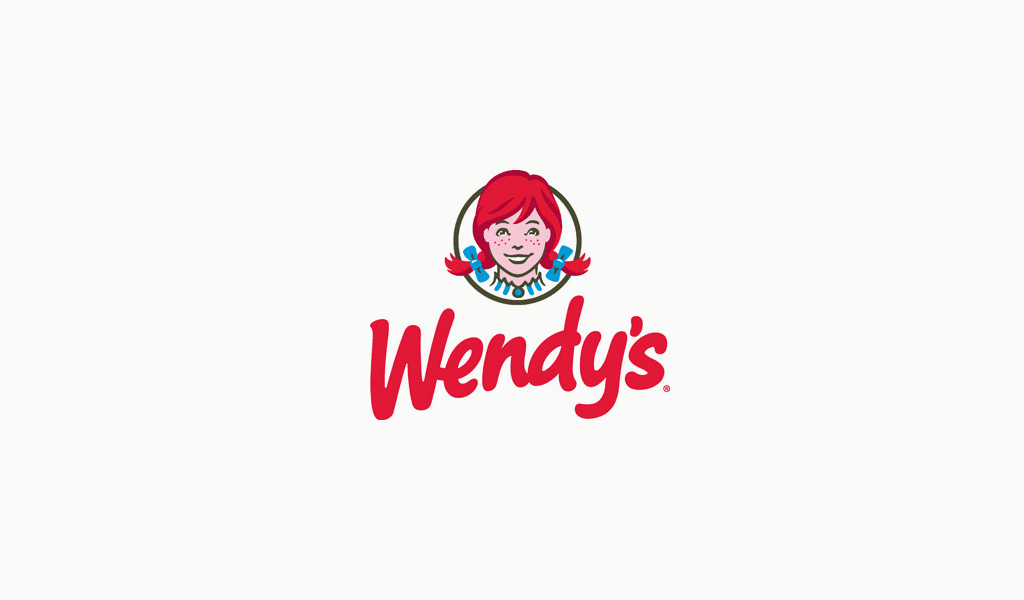
We have Brand Marks and then Abstract Marks. Completing the trio of graphically driven logos are Mascots. Unlike the former two examples, Mascots are illustrations of actual people or anthropomorphized characters.
This type of logo is generally received positively, thanks to our affliction with seeing another human face, regardless of how cute or animated it may seem. Brands that make use of mascots build an image as “family-friendly” brands with personal spokespeople.
Some unique brands with Mascots as their logos are Wendy’s, KFC, and Cheetos. Basketball teams also tend to feature the team mascot in their logo to boost the design.
A quick note about Mascots: Mascots give off a warm and fuzzy feeling, which draws in children. So, brands in conservative and more adult fields, like law or governance, should look to this type for the best logo template for them.
As previously mentioned, don’t be so rigid choosing the type of logo for your logo design. We can also mix and match these types, resulting in Combination Logos — the final (and not-so-secret) logo type.
Learning about the intricacies of branding and logo creation isn’t restricted to new entrepreneurs. Even novices need to be refreshed on these matters to be better equipped in choosing the best logo template for our brands.
Those of us who feel adequately prepared can then move forward and peruse through TemplateMonkey, which offers an extensive logo catalog that caters to every industry and business type. You’ll find the best logo template for you in the 2000+ items offered.

